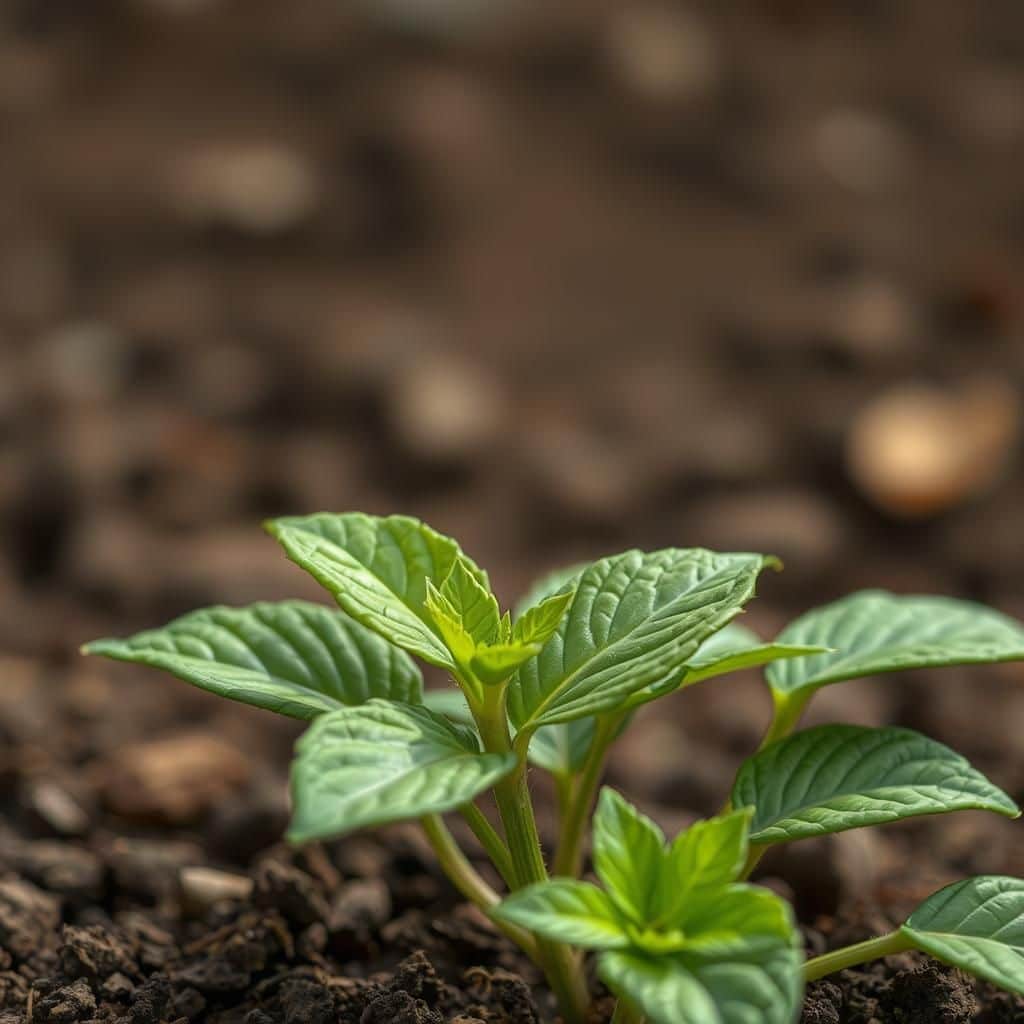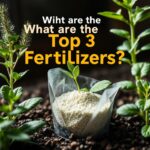What Do Plants Look Like When They Get Too Much Fertilizer? Signs, Symptoms, and Solutions Explained

Excessive fertilization can be detrimental to plant health, often leading to a range of visible signs and symptoms that indicate distress. Understanding what happens when plants receive too much fertilizer is crucial for gardeners and horticulturists alike. This article will explore the telltale signs of over-fertilization, such as leaf burn, stunted growth, and nutrient imbalances. We will also discuss the underlying causes of these issues and provide effective solutions to restore plant vitality. By recognizing the effects of excessive nutrients, gardeners can take proactive steps to ensure their plants thrive in a balanced environment.
Signs of Over-Fertilization in Plants
When plants receive too much fertilizer, they may exhibit several distinctive symptoms that indicate over-nutrition. The most common signs include dark green or yellowing leaves, which may develop burnt tips due to excess nutrients. In some cases, plants may experience stunted growth as a response to being overwhelmed by nutrients that cannot be absorbed efficiently. Furthermore, over-fertilized plants can attract pests and diseases, as their weakened health makes them more vulnerable. Additionally, if the soil becomes too saline from over-fertilization, it can lead to root damage and hinder water uptake, exacerbating the plant's stress. Recognizing these signs early can help in taking corrective measures to restore the plant's health.
Leaf Symptoms
One of the first indicators that a plant has been over-fertilized is the condition of its leaves. They may turn dark green or even yellow, particularly at the leaf margins where the outer edges may become crispy or burnt. This leaf scorch occurs due to the excessive buildup of salts from fertilizer that pull moisture away from the leaves, causing them to dry out. In extreme cases, leaves may drop prematurely, signaling that the plant is under stress and unable to take in the nutrients effectively.
Stunted Growth
Over-fertilization often leads to stunted growth, where plants do not grow as tall or as robust as they should. This happens because the roots may become overwhelmed by concentrated nutrients, unable to absorb them properly. As a result, plants may exhibit shorter stems, smaller leaves, and overall less vigorous growth. Unlike nutrient deficiency, where growth can look leggy and weak, stunted growth from over-fertilization manifests as a compact yet unhealthy appearance.
Pest Infestation
A side effect of over-fertilization is that it can make plants more attractive to pests. Healthy plants often produce natural defenses against insects, but when a plant is stressed from nutrient overload, these defenses may weaken. Consequently, pests such as aphids and spider mites could be drawn to the plant, exacerbating the problem. This interaction between over-fertilization and pest invasion can create a vicious cycle that further deteriorates plant health.
Root Damage
Excessive fertilization can lead to root damage caused by a high concentration of salts in the soil. When fertilizer dissolves into the soil, it increases the osmotic pressure, making it difficult for roots to absorb water, leading to drowning or dehydration. The roots can get burnt, causing a breakdown in their ability to anchor the plant and absorb nutrients and water, which leads to further stress on the plant.
Soil Salinization
Frequent over-fertilization can result in soil salinization, where salts accumulate in the soil and affect its quality. This can create an inhospitable environment for root health and microbial activity. As the salt levels rise, they can prevent plants from taking up necessary water and nutrients, despite their abundance in the form of fertilizer. Observing soil changes and managing fertilizer application is crucial in maintaining a balanced nutrient environment.
| Symptom | Description |
|---|---|
| Dark Green Leaves | Indicates excessive nutrient uptake, may lead to burning. |
| Leaf Scorch | Crispy tips due to high salt concentration. |
| Stunted Growth | Plants are short and uncharacteristically compact. |
| Pest Attraction | Weak plants become targets for insects. |
| Root Damage | High salt levels lead to non-functional roots. |
How to tell if a plant has too much fertilizer?

When determining if a plant has received too much fertilizer, you should look for several key signs and symptoms. Over-fertilization can lead to nutrient burn, soil toxicity, and overall plant stress. Here are some indicators that a plant may be suffering from excessive fertilizer.
Signs of Nutrient Burn
Nutrient burn is one of the most noticeable symptoms of over-fertilization. It often manifests as browning or yellowing of the leaf tips. This damage occurs because the concentration of nutrients in the soil is too high, causing the plant to take up excess salts.
- Leaf tip burn: The most common sign, where the tip of the leaves becomes brown and dry.
- Yellowing leaves: Leaves may start to yellow, especially older leaves, as they struggle to absorb water and nutrients.
- Wilting: Despite being fertilized, the plant may exhibit signs of wilting due to root damage.
Stunted Growth
Over-fertilization can hinder a plant's growth. When plants receive too much fertilizer, the excess nutrients can lead to nutrient lockout—where the plant can't absorb other essential nutrients.
- Slow or no growth: If your plant is not growing as expected, even during the growing season, it may be over-fertilized.
- Spindly stems: Stems may grow long and thin as the plant tries to reach for light while battling root issues.
- Reduced flowering: Flowering plants may produce fewer blooms, as energy is diverted to cope with nutrient overload.
Leaf Drop
Excessive fertilizer can cause plants to shed their leaves prematurely. This is a stress response to high salinity or toxicity in the soil.
- Yellow leaves falling: If the lower leaves start turning yellow and dropping off, it's a sign of stress.
- Leaf curl: Leaves may curl or droop before falling off.
- Overall leaf loss: Significant loss of leaves especially from the lower part of the plant indicates severe stress.
Soil Salinity
Another indicator of too much fertilizer is the build-up of salts in the soil. Over time, these salts can accumulate and negatively affect plant health.
See also:
- White crust on soil: Look for a white crusty layer on the surface of the soil, which indicates salt build-up.
- Poor water absorption: The soil may repel water instead of absorbing it due to high salt concentration.
- Unpleasant odor: Sometimes, a foul smell may emanate from the soil, indicating issues with soil health.
Checking pH Levels
Finally, improper pH levels can indicate that a plant has been over-fertilized. Certain fertilizers can lower the pH of the soil, making it too acidic for optimal nutrient uptake.
- Acidic soil: Use a pH meter to test the soil; if the pH is too low (usually below 6.0), it might be due to over-fertilization.
- Nutrient deficiencies: An imbalanced pH can lead to nutrient deficiencies despite the presence of fertilizers.
- Altered microbial activity: Over-fertilization can disrupt the beneficial microbes in the soil that help with nutrient absorption.
What are the symptoms of fertilizer toxicity in plants?

Fertilizer toxicity occurs when plants receive an excessive amount of nutrients from fertilizers. This can lead to various negative symptoms that may hinder the health and growth of the plants. Understanding these symptoms is crucial for effective plant care and recovery.
Visible Leaf Damage
One of the first signs of fertilizer toxicity is visible leaf damage. This can manifest in several ways:
- Leaf burn: Tips and edges of the leaves may turn brown and crispy.
- Chlorosis: Yellowing of leaves, particularly notable in older leaves, may occur due to nutrient imbalance.
- Wilting: Leaves may droop or appear limp, indicating stress on the plant.
Stunted Growth
Stunted growth is another common symptom of fertilizer toxicity. When plants are overloaded with nutrients, they may struggle to thrive:
- Reduced height: Plants may not reach their expected size or growth height.
- Poor root development: Roots may become damaged or restricted, leading to inadequate nutrient uptake.
- Limited leaf expansion: New leaves may remain smaller and underdeveloped.
Abnormal Leaf Coloration
Changes in leaf coloration can indicate abnormal nutrient levels. This may present in various forms:
- Excessive dark green color: A sign of nitrogen overload, which may eventually lead to leaf drop.
- Copper-induced toxicity: Leaves may develop a purplish tint due to excess copper levels.
- Salt burn appearance: White crusts may form on leaf surfaces or soil, indicating high soluble salts due to over-fertilization.
Root Damage
Excessive fertilizer concentration can lead to root damage, significantly affecting plant health:
- Root burn: Fertilizer salts can dry out or scorch roots, leading to inadequate water absorption.
- Root rot: Over-fertilized plants may struggle with poor drainage, increasing the risk of fungal infections.
- Reduced nutrient absorption: Damage to roots can hinder the plant's ability to absorb essential nutrients effectively.
Increased Pest and Disease Susceptibility
Plants suffering from fertilizer toxicity may also exhibit increased vulnerability to pests and diseases:
- Pest infestations: Weakened plants may attract pests that seek out stressed plants for food.
- Fungal infections: Over-fertilization can create a suitable environment for fungi due to damp conditions.
- Higher disease incidence: A stressed plant is less able to fend off diseases, making it more susceptible to infections.
What happens if you fertilize your plants too much?

If you fertilize your plants too much, several adverse effects can occur, leading to detrimental outcomes for plant health and growth. Over-fertilization can create an imbalance in soil nutrients, resulting in a variety of issues both for the plants and the surrounding environment. Here’s a detailed exploration of what happens when you apply too much fertilizer.
Impact on Plant Growth
Over-fertilization can severely affect plant growth. Plants may display abnormal growth patterns or even stunt their growth altogether. The excess nutrients can cause an overabundance of salts, which can lead to poor water uptake by the roots.
- Increased vulnerability to diseases and pests.
- Weak root systems that struggle to absorb necessary water and nutrients.
- Changes in leaf color and premature leaf drop.
Nutrient Imbalance
When too much fertilizer is applied, it can create a nutrient imbalance in the soil. Different nutrients can outcompete each other for uptake by plant roots, leading to deficiencies in other essential nutrients.
- High nitrogen levels can block the uptake of potassium, leading to weaker plants.
- Excess phosphorus can hinder the absorption of iron, which is crucial for plant health.
- Unbalanced nitrogen, phosphorus, and potassium levels can disrupt metabolic processes.
Soil Toxicity
Excessive application of fertilizers can lead to soil toxicity. This toxicity can affect soil microorganisms and the overall health of the soil ecosystem, crucial for plant growth.
See also:
- Harmful alterations to beneficial microbial communities in the soil.
- Increased risk of soil erosion due to weakened soil structure.
- Potential leaching of toxic substances into groundwater.
Water Stress
Over-fertilized plants often experience water stress. The high concentration of salts can create an osmotic pressure that prevents roots from effectively absorbing water, leading to dehydration.
- Symptoms include wilting and brown leaf edges.
- In severe cases, water stress can lead to plant death.
- Increased likelihood of needing more irrigation, which can exacerbate waste of water resources.
Environmental Impact
Excessive fertilizer use doesn't just harm the plants; it can also have broader environmental impacts. Nutrient runoff from over-fertilized plants can contaminate waterways, leading to increased algal blooms.
- Algal blooms deplete oxygen in water bodies, harming aquatic life.
- Runoff can introduce harmful chemicals into local ecosystems.
- Long-term soil health degradation can occur, affecting future plant growth.
How do you fix over fertilized plants?

To fix over-fertilized plants, it is crucial to recognize the symptoms of excess nutrients and take appropriate actions to restore the health of the plants. Over-fertilization can lead to nutrient lockout, which prevents plants from absorbing the nutrients they need. Here are some steps to remedy the situation:
Identify Symptoms of Over-Fertilization
Recognizing the signs of over-fertilization is the first step in addressing the problem. Common symptoms include:
- Yellowing leaves: The leaves may turn yellow, particularly on older foliage.
- Leaf burn: The tips of the leaves become brown and crispy.
- Stunted growth: The plant may stop growing or exhibit poor growth.
- Salt buildup: White crust may appear on the soil surface or pot's edges.
- Poor flowering or fruiting: The plant may produce fewer flowers or fruits.
Flush the Soil
Flushing the soil is an effective method to remove excess nutrients. This involves:
- Watering thoroughly: Apply a large volume of water, ideally twice the size of the pot, to wash away nutrients.
- Allowing drainage: Ensure that the water can drain completely to avoid waterlogging.
- Checking the runoff: Observe the water coming out of the bottom to see if it is cloudy or contains salts.
Adjust Your Watering Routine
Proper watering can help restore the balance in over-fertilized plants. Consider the following adjustments:
- Use distilled or rainwater: This can help dilute salts and reduce nutrient levels.
- Monitor moisture levels: Allow the top inch of soil to dry out before rewatering.
- Avoid over-watering: Too much water can exacerbate the problem by further diluting nutrients.
Repot the Plant
If flushing and adjusting water levels do not work, repotting may be necessary. This involves:
- Choosing fresh soil: Select a high-quality potting mix that is appropriate for your plant type.
- Gently removing the plant: Carefully take the plant out of the pot while minimizing root disturbance.
- Removing excess soil: Brush off any old soil that is heavy in nutrients and replace it with fresh soil.
Reduce Fertilizer Use in the Future
To prevent over-fertilization from happening again, change your fertilization habits by:
- Following recommended guidelines: Always adhere to the manufacturer's instructions on fertilizer usage.
- Using slow-release fertilizers: These provide a steady supply of nutrients without the risk of over-fertilization.
- Conducting regular soil tests: Test soil periodically to understand nutrient levels and adjust accordingly.
Questions from Our Readers
What are the signs of over-fertilization in plants?
Over-fertilization can lead to several noticeable signs in plants, such as wilting, yellowing of leaves, and stunted growth. The roots may become burned, which ultimately restricts their ability to absorb water and nutrients effectively, causing the overall health of the plant to deteriorate.
How does too much fertilizer affect plant leaves?
When plants receive excessive fertilizer, their leaves may show burnt tips or edges, which is a clear indicator of nutrient toxicity. Additionally, leaves can become discolored, such as turning a dull green or even yellow, as the balance of essential nutrients becomes disrupted.
Can over-fertilization lead to plant death?
Yes, too much fertilizer can indeed lead to the death of the plant. The toxicity level can make it difficult for the roots to function properly, causing the plant to suffer from nutrient imbalances and ultimately leading to decline or death if the condition is not corrected in time.
What should I do if my plants are suffering from over-fertilization?
If you suspect that your plants are suffering from over-fertilization, the first step is to flush the soil with plenty of water to leach out excess nutrients. It is also important to reduce or stop the application of fertilizer altogether until the plants show signs of recovery, and to ensure that the soil pH and nutrient levels are balanced.
See also:

If you want to read more articles like What Do Plants Look Like When They Get Too Much Fertilizer? Signs, Symptoms, and Solutions Explained, we recommend you check out our Fertiliser category.
Leave a Reply
Related Articles